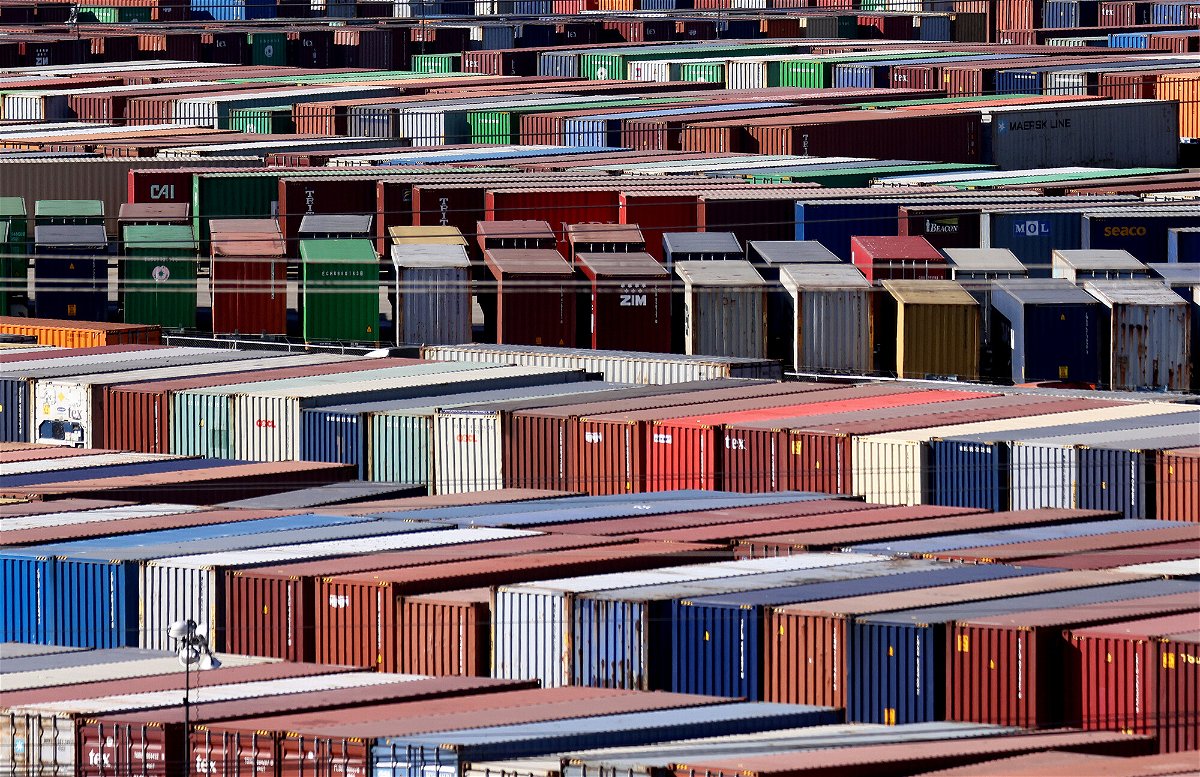Amazon, Walmart and the world’s biggest retailers are making port congestion and pollution worse, new report finds

The Federal Trade Commission says its ordering Amazon
By Moira Ritter, CNN Business
The supply chain is facing major blockages, and container ships are heaping pollution into communities near the congested ports.
The biggest offenders are, unsurprisingly, the world’s biggest retailers, according to a new report Tuesday conducted by environmental organizations Stand.earth and Pacific Environment. The report shows that goods imported to the United States by Walmart, Target, Amazon and IKEA between 2018 and 2020 accounted for 20 million metric tons of carbon dioxide equivalent emissions.
As of Monday, there were 84 vessels waiting off the coast of Southern California, 37 outside the Port of Los Angeles and the other 47 near the Port of Long Beach.
For the communities surrounding those ports, emissions from cargo ships have long led to major health concerns. The increase in consumer demand because of the Covid-19 pandemic and ongoing port congestion is pushing pollution levels in these communities to all-time highs, according to the report.
“Until recently, the massive climate disrupting and human health harming emissions from international container shipping — and the companies that are buying their services — have sailed under the radar of public scrutiny,” the report said.
As of 2021, the shipping industry accounts for almost 3% of the world’s total greenhouse gas emissions. That’s more than the emissions from global air travel. The report predicts that if consumer demand continues, emissions will grow 50% over 2018 levels, an increase of up to 500 million metric tons of carbon dioxide.
An ‘outsized role’
Of the companies examined, Target and Amazon have played and “outsized role in the current congestion and pollution crisis” off the California coast.
Amazon noted it has a goal to deliver 50% of its shipments with net-zero carbon by 2030. It also was a signatory of the Climate Pledge to achieve net-zero carbon emissions across its business by 2040.
As vessels from two of the world’s biggest retailers have idled offshore, they have brought “higher levels of asthma and cancer-associated air pollutants including particulate matter, nitrogen oxide, and sulfur oxide into the port-adjacent communities of San Pedro, Wilmington, and West Long Beach,” the report states.
The report estimates that Target is responsible for more than 6.4 million metric tons of carbon dioxide equivalent emissions while Amazon is responsible for 1.4 million metric tons.
A Target spokesperson said the company is committed to “reducing our shipping carbon footprint as we work toward our goal of being a net zero enterprise by 2040, with net zero emissions across both our operations and supply chain.” Target is also working with its global carriers to ensure they adhere to the International Maritime Organization’s 2020 limits on sulfur fuel for ships to help reduce emissions, the spokesperson added.
Walmart, the world’s largest retailer, topped the list with the highest volume traded and the largest emissions. The report estimates that Walmart is responsible for more than 11.5 million metric tons of carbon dioxide equivalent emissions over the past two years.
A representative from Walmart told CNN Business the retailer was the first to set a science-based target for emissions reduction, that the company is committed to reaching zero emissions in its operations by 2040. And two-thirds of products sold in US Walmart locations were made, grown or assembled domestically, the representative added.
Ikea said it agrees emissions from ocean shipping is an important topic and needs more focus.
Reducing emissions
Unlike the other three companies included in the report, IKEA’s emissions have decreased over the past two years. The report estimates that the furniture retailer emitted 1.3 million metric tons of carbon dioxide equivalent emissions between 2018 and 2020. However, those emissions have followed an overall downward trend, decreasing 16% between 2018 and 2019 and another 8.5% between 2019 and 2020.
In an effort to work around supply chain congestion, and in line with its strategy to reduce carbon emissions, IKEA has been transporting goods from China to Europe via rail rather than ships. This shift is one reason the retailer has seen a decrease in emissions, according to the report.
“We are a big transport buyer, and we have a big responsibility to influence the ocean transport industry in a positive way,” the company said in a statement. “IKEA is committed to become climate positive by 2030, by reducing more greenhouse gas emissions than the IKEA value chain emits.”
Ongoing congestion
Last month, Goldman Sachs warned that backlogs at ports are likely to persist “at least” through the middle of 2022 and estimated that there was roughly $24 billion in goods outside the Ports of Los Angeles and Long Beach alone.
The ongoing port congestion has raised concerns as holiday shopping ramps up and consumer prices continue to rise.
In October, President Joe Biden announced that the Port of Los Angeles would move to a 24/7 schedule, bringing it in line with the Port of Long Beach, which was already operating around the clock.
Biden is expected to speak Wednesday about the supply chain crisis.
The-CNN-Wire
™ & © 2021 Cable News Network, Inc., a WarnerMedia Company. All rights reserved.